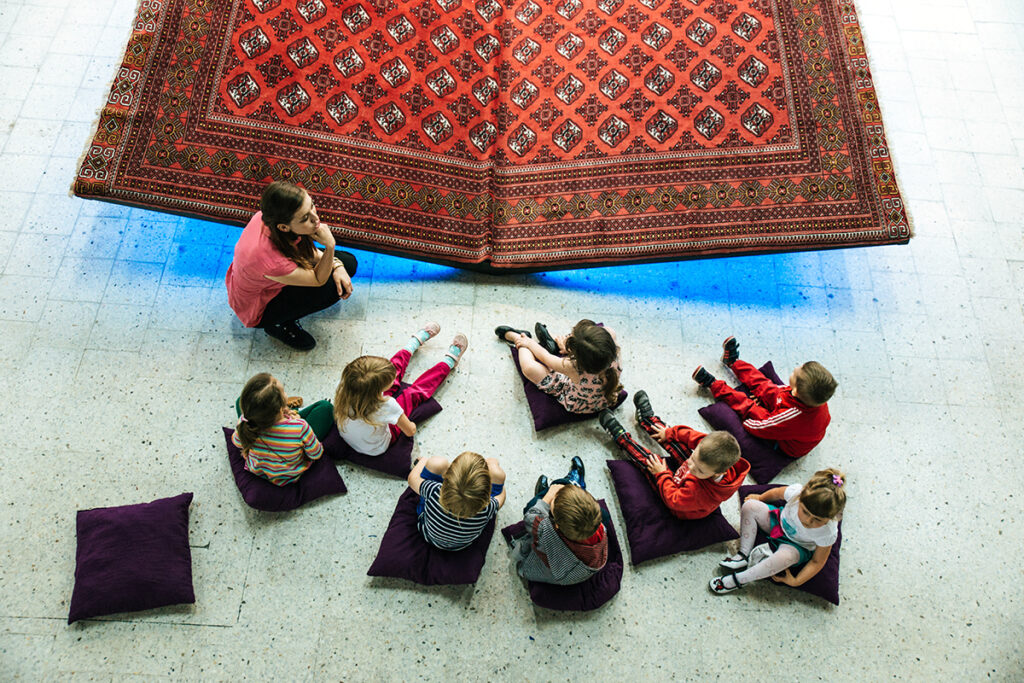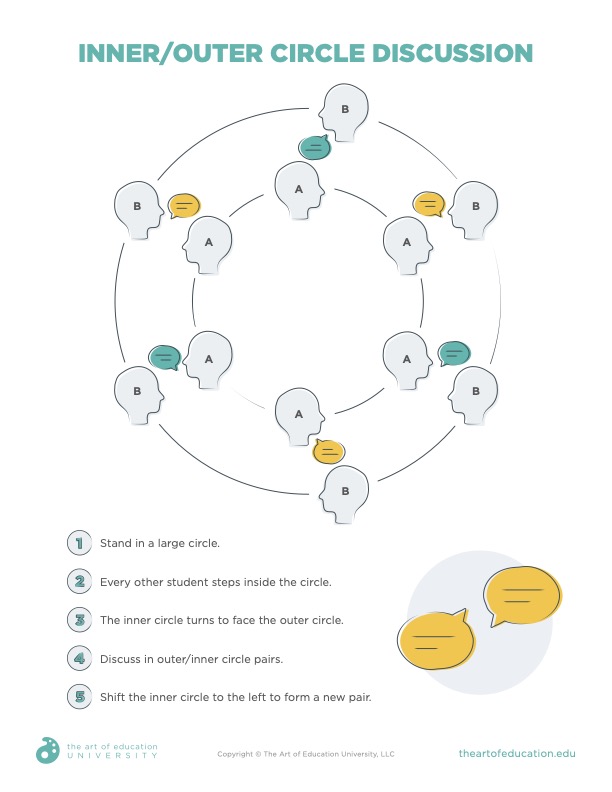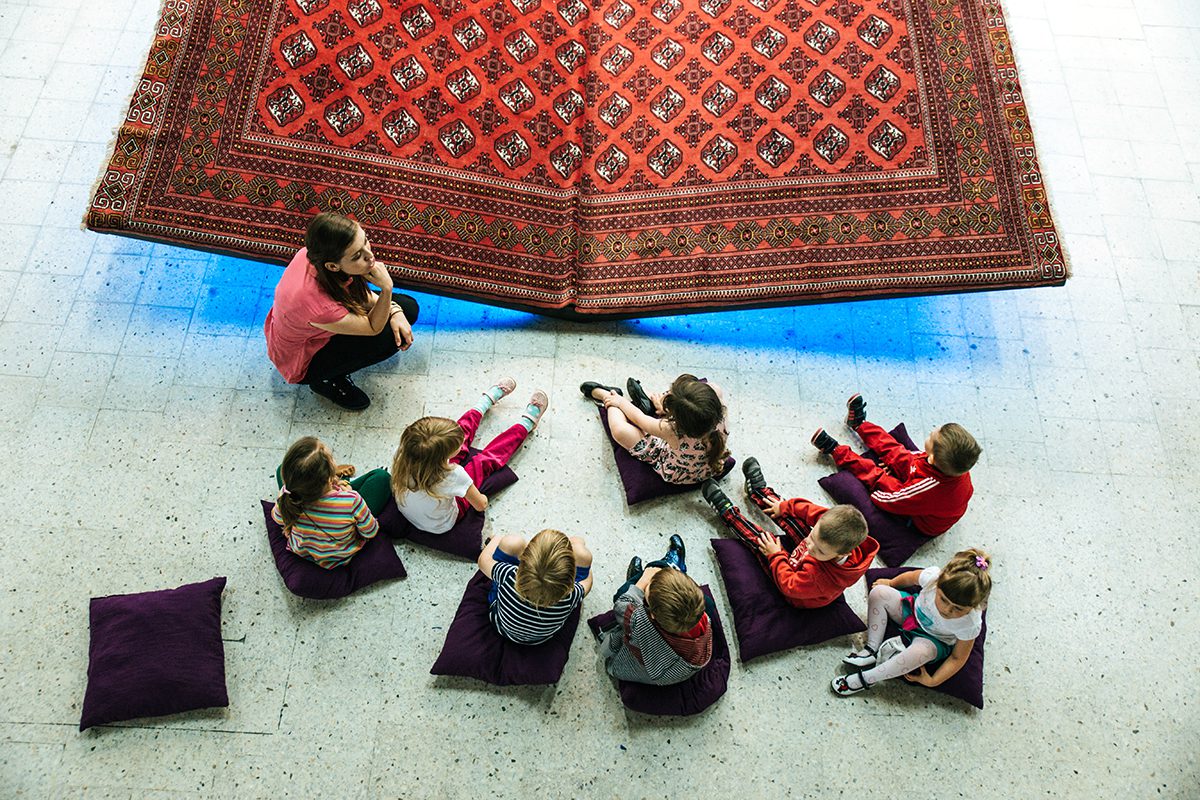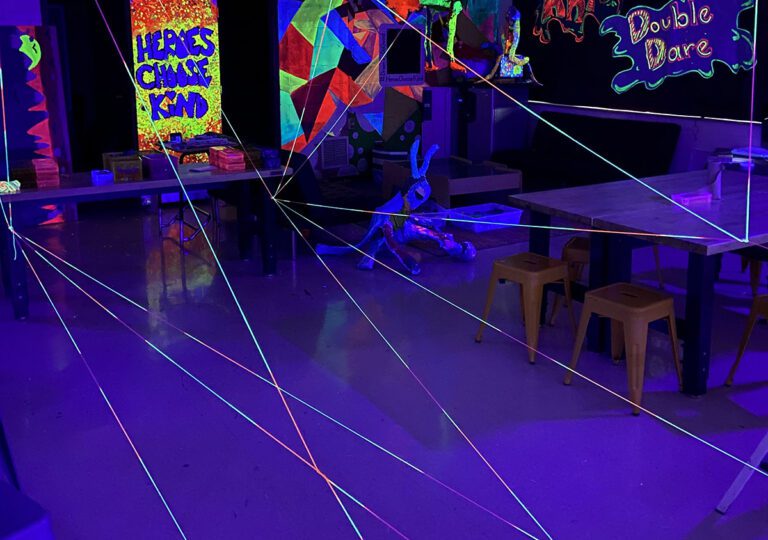Whether it’s a piece of art history by a master, a contemporary installation, a community mural, or a student drawing, we all know that looking at art can be mesmerizing. Many of us can stare at and explore one artwork for an extended period. But what about our students? Due in part to an increase in social media and technology use, attention spans are waning. Our student artists get bored quickly! How can we keep their focus, encourage them to interact face-to-face, and get them excited to look at and talk about art?
Let’s look at six activities to get your students to investigate an artwork more closely.
For more tips to get your students passionate about looking at and talking about artworks, take a look at the Pack, Strategies for Student Engagement in PRO Learning. This short yet packed series of professional development videos and resources is facilitated by Chelsea Fleming, AOEU’s K–12 Professional Development & Curriculum Specialist and a former middle school art teacher and instructional coach. Check out Chelsea’s tips to keep your students interested and actively participating throughout the entire period. Read how to get your district or school to cover PRO by checking out this article and filling out this quick contact form.

1. Give One, Get One
Each student writes down three things about anything they see in the artwork. Pair students up. Each partner takes turns sharing one thing they saw. They also write down their partner’s observations. This is a very simple way to get students to see artwork from another person’s perspective.
Take this activity one step further.
Students share how their lists differed from their partner’s and hypothesize as to why!
2. Hidden View Drawing
Pair students up. One student gets to see the artwork, and the other does not. The student who can see the artwork describes the piece to their partner. The other partner draws and tries to replicate the artwork as close to the original as possible. The final reveal or comparison is great fun and usually full of laughter. This is a great activity to practice how to describe an artwork and hone communication skills.
Take this activity one step further.
Ramp up the challenge by timing the activity!

3. Four Corners
Get those kinesthetic learners up and moving with this game! Label the four corners of your room with the letters “A,” “B,” “C,” and “D.” Project an artwork with multiple-choice answers that align with the four corners/letters for all to see.
For example, a fill-in-the-blank statement can be, “The element most used in this artwork is ___.” Corner A is Line, corner B is Shape, corner C is Texture, and corner D is Value. Students go to the corner they believe is the best answer.
Take this activity one step further.
Post a different artwork (by students or a master artist) in each corner. Students go to the corner with their favorite artwork and use unit vocabulary to share why it’s their favorite. If using student artwork, post exemplars from a different class section, but cover the names so no one feels singled out. Call on students to justify their answers.

4. Fish Bowl
Arrange students in two concentric circles. The inner circle is students in the fishbowl. The outer circle is students observing the “fish” in the fishbowl. Students in the outer circle are not allowed to talk. They write questions about the artwork on a sticky note or small scrap of paper. Fold or crumple the papers and “toss” into the circle to “feed the fish.” Encourage the outer circle to write down questions that build upon previous answers and consider how much “food” is in the bowl at once. The inner circle students talk and answer the questions passed to them. Students switch circles halfway through so each student can ask and answer.
5. Snowball Responses
For a great winter activity, draw a snowman on a whiteboard or large piece of paper and place it in an emptier part of the classroom. Show an artwork and ask a question. Students write their responses on a piece of paper, crumple them up into a “snowball,” and throw them at the snowman. This is a safe way to share ideas and opinions anonymously.
Take this activity one step further.
Transfer this activity to a check-in. Ask what questions students have about an assignment or how they are feeling that day.

6. Inner/Outer Circle Discussion
Similar to the Fish Bowl game, arrange students in two concentric circles. The inner circle faces out, and the outer circle faces in, so both circles of students are facing each other. Each student is paired with one student facing them. Provide prompts or questions and a timer for responses. After each prompt or question, one of the circles rotates. This gets students out of their seats, interacting with multiple peers, and it literally keeps the discussion moving.
FLEX Curriculum not only has hundreds of lessons aligned to all 50 states’ standards, but it also has tons of student-facing resources. The Inner/Outer Circle Discussion handout is a fabulous example of one of the resources. It includes a visual with written steps of the activity. To learn more about this resource and the many other features of FLEX, fill out this quick contact form.

Take this activity one step further.
Do this as a peer critique! Each pair gives one “glow” and one “grow” piece of feedback before rotating.
What do all of these six activities have in common? They all make looking at and talking about art fun! These activities help students feel safe to share, challenge them to talk to each other and work together, and get them out of their seats. All of these benefits contribute to deeper interactions with art and with each other. Your class will be a place your students look forward to attending for the rest of the year, and it will give them positive memories to look back at and remember for years to come.
What is your favorite fun activity to get your students talking about art?
Which activity will you add to your toolkit to try this week?
Magazine articles and podcasts are opinions of professional education contributors and do not necessarily represent the position of the Art of Education University (AOEU) or its academic offerings. Contributors use terms in the way they are most often talked about in the scope of their educational experiences.





